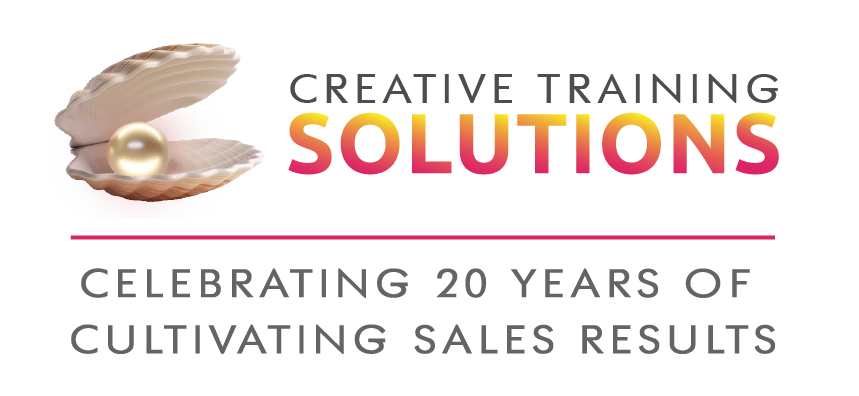Keeping The “Shine” On New Initiatives

We’ve all been there…
We attend a conference, hear a speech, listen to a TED Talk, or read an inspiring book, and we are completely committed to starting a new initiative. We feel like a kid with a brand new toy. It’s so exciting — we can’t wait to dive in and start playing.
But new initiatives, like new toys, can become dull and worn out over time. Our shiny ball is not as fun to play with as it used to be and our excitement wanes. It’s just like all the others. We don’t give it the same attention as we did in the beginning.
No matter what the initiative, keeping motivated over the long haul is extremely challenging. Particularly in the sales world, habits and routines are not always exciting, so what can we do to keep moving in the right direction?
To start, we need a plan and the commitment to make it stick. Think of these three questions before implementing a new initiative:
- What will this new initiative potentially do for my company and for me?
- Do we have a clearly defined timeframe established (i.e. start and stop or check-in times) in order to measure the success of our new initiative?
- Are there any roadblocks that could derail our new initiative from happening now or in the future?
Do we have shiny new-toy excitement after answering these questions? If yes, we need to put a plan in place that will carry this initiative through. Remember: The one with the best plan wins in the end. We cannot just wing it. As Chet Holmes states in The Ultimate Sales Machine, if you plan things right, “You will have the pig-headed commitment and discipline to stick to it.”
Here are some tips to keep the shine going when implementing a new initiative for yourself or your sales team:
1. Have a set beginning and end in mind.
Whether making a commitment to schedule a certain number of appointments per day or per week, or making sure your pipeline has X amount of active opportunities at any given time, you need a set timeframe in order to measure your success.
As Stephen Covey says in The 7 Habits of Highly Effective People, “Begin with the end in mind.” By having the end in mind, or at least set checkpoints, you’re giving yourself a chance at success, instead of just spinning that shiny ball forever.
2. Define the expectations required for this initiative and detail why they make sense.
Even if you are doing something new for you, and not for your boss or someone else, define your goals and explain why those expectations or goals are important.
For example, your goal might be to make sure you have ten active opportunities at any given time in your pipeline. If you don’t document the reasons for this goal, then it will just be a meaningless number. The likelihood of sticking to the initiative will drop. However, if you document that this is important because for every ten active opportunities, two opportunities will become clients during your normal sales cycle, which in turn will increase your sales…this keeps the shine on your initiative.
3. Praise progress and build from there.
As Ken Blanchard states in The One Minute Manager, “Create a great sales environment by catching people doing something right.” Simple rewards can encourage positive activity.
If you reach your goal of keeping ten active opportunities in your pipeline for four weeks, reward yourself. It could be as small as indulging in an extra shot of espresso in your coffee. The key is acknowledgement. For a team member, the reward could be a gift card to a local restaurant. Aim to keep things interesting.
Are you inspired to try something new? There is no time like the present. Figure out a new initiative to implement over the next month or the next quarter. Tap your inner child and feel the excitement that comes with getting a shiny new toy. Use a little extra polish to see that initiative through to the end.
Good luck and great selling!
ETIQUETTE CORNER:
Nametag Etiquette
It’s that time of year when conventions, tradeshows and networking events are ramping up. These events often come with the expectation that you identify yourself with a nametag. Are you ever unclear about the correct way to do this?
Where you place your nametag, along with what you write on it, will contribute to the overall impression you give to others. Do you haphazardly stick it on anyplace and off you go?
Can you find what’s wrong with the nametag placement in this photo?
Here are three things to remember regarding nametags:
- If you are presented with a sticker, pin-on or clasp nametag, make sure you place it on your right side — NOT your left as in the photo above –approximately four inches below your shoulder. This will ensure that others can see it, especially when shaking hands with you.
- Don’t include Ms., Mr., or Mrs. preceding your name. It is acceptable to write a professional title such as Dr. before your name. This is a personal choice depending on if you want others to know you credentials.
- If you are handwriting your own nametag, take the time to make it legible. Print your name (no cursive) and make sure you put both your first and last names on the tag. This is much more professional than just writing your first name. If you are at a networking event or trade show with multiple companies, it is appropriate to write your company name below your name on the tag as well.
Besides placing your nametag on your right side, greet those you meet with a firm handshake and a warm smile. Relax, enjoy, and reap the benefits of connecting with others at your upcoming business events!



